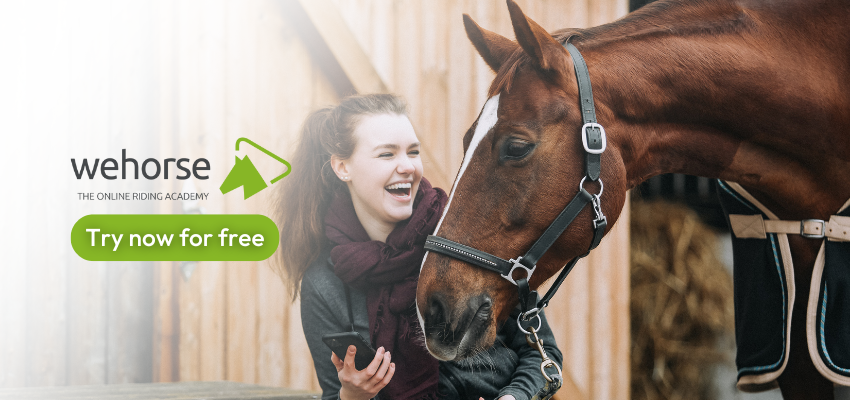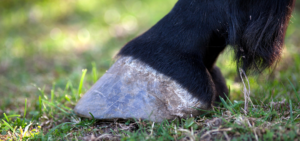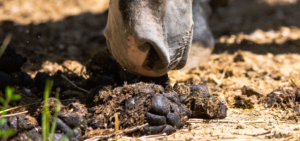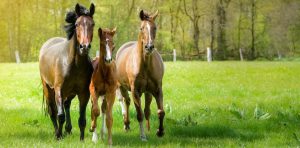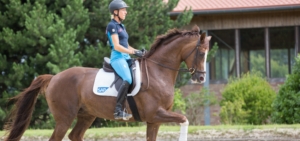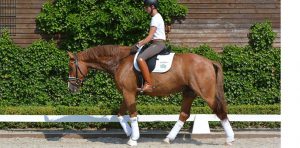“Real” momentum in dressage movements not only looks good, but it is also a test of proper training.
In this article, you will learn what a correct swing looks like, how you can improve your horse’s swing and the five rules to keep in mind when developing swing.
Table of Contents
- What should momentum look like?
- What momentum shouldn’t look like…
- Momentum can be gained
- The first step is forward
- No momentum without lifting the load
- The contact must be developed correctly
- You can improve existing momentum with certain exercises
- Conclusion: The movement must travel through the whole body
What should momentum look like?
Momentum is created when the horse gives a powerful push from the hindquarters, swings along over its back, approaches the bit, and carries itself. The increased angling and energetic stepping down of the hind legs with an engaged topline create more expression and space in the respective gait. But, the momentum can only be developed if the basic work has been done beforehand. Then the horse can move in rhythm, relaxed, and in safe contact.
What momentum shouldn’t look like…
The goal in swing development is not more speed, but more forward-up motion. A tense “jog” at high speed, where the horse stretches its legs forward, has nothing to do with momentum. Especially in the piaffe or passage, so-called instep kicks are sometimes difficult to distinguish from swinging steps. The horse should be relaxed despite the positive tension needed to develop momentum.
Pay close attention to yourself and others: Is it actually a real swing or is it negatively formulated, i.e., more of a “pull and push” into the tension?
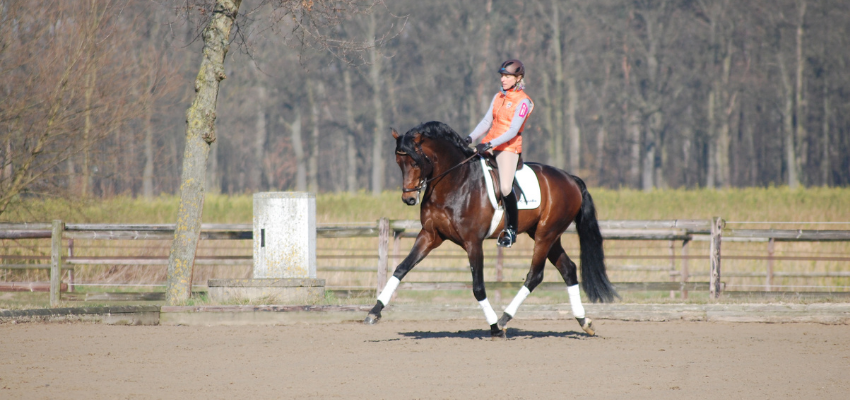
Five rules to keep in mind when working on your horse’s swing:
1) Momentum can be gained
Good news: A horse doesn’t have to be born with momentum, you can develop it with good dressage training. Of course, there are horses that naturally have more swinging gaits than others. But not only can you gain momentum, but you can also encourage it. A horse of average conformation, with which the swing has been worked out gently and with the right exercises, is much nicer to look at than a horse with artificial movement that was trained to do it at a young age.
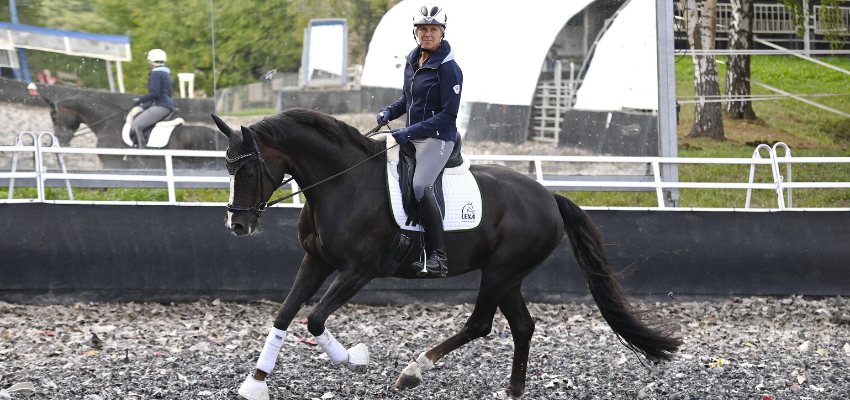
Don’t be discouraged if your horse doesn’t have the most energetic gaits. The path to momentum is important!
2) The first step is forward
Forward is the basis for momentum development and must be given. Your horse should react promptly to the driving aids and move forward willingly. Good momentum can only develop from the released forward movement.
Keep two things in mind:
- First: going forward does not mean high speed, but rather diligence, especially with the hindquarters. Momentum can also be generated without speed, for example in a piaffe or canter pirouette. So don’t confuse “running” with momentum. If you trot your horse properly forward on the diagonal and have the feeling that momentum is involved, that does not mean that you have developed a healthy and correct momentum. This forced momentum caused by going too far forward causes tension or even cramps in the horse, which is not conducive to healthy momentum development. Momentum doesn’t mean getting faster but developing more expansive and expressive steps.
- Second: The forward thought alone is not enough – it is about developing the forward-upward. Your horse should go more uphill, so to speak. This “uphill” only occurs when your horse becomes more active with its hind legs, stepping further under the center of gravity and taking on more load on the hind legs.
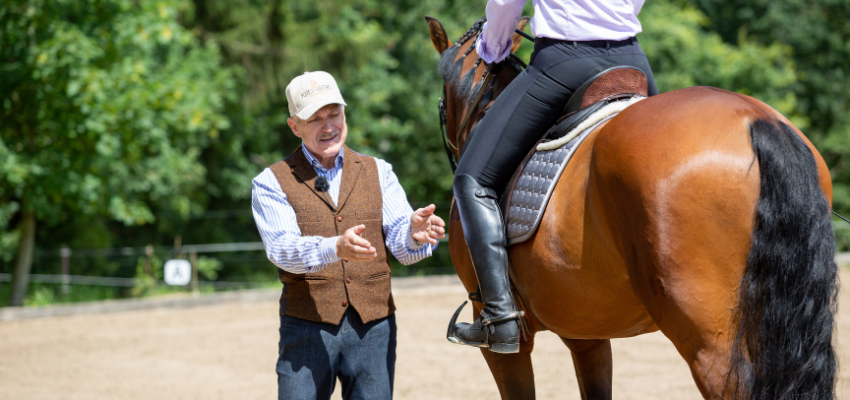
3) No momentum without lifting the load
Try it yourself: If you jog along easily and lean a little forward, you will get flat steps. If you lean your upper body back a little more, bend your legs more and keep running at the same pace, you will notice that your steps are not longer but higher. If you push yourself off the ground harder and your hovering phase increases – you develop momentum.
In theory, you can transfer this to your horse. Proper momentum only occurs when it absorbs the load on the hindquarters, strengthens the muscles accordingly, and converts the thrust into carrying capacity.
Two tips: Practice curved, wavy lines through the entire track and practice stepping over on the circle. Start at a walk and then work your way up to a trot or even a canter.
Your horse can only develop the necessary strength in the hindquarters and the energetic stepping-off if the contact has been worked out correctly! In this course, you will learn how to work on leaning!
4) The contact must be developed correctly
A good strong trot, correctly ridden, looks light-footed, and easy. The horse carries itself; it is no longer necessary to lean or be driven. However, such a picture with verve and lightness can only come if the right basic training has been worked out beforehand. The energy from the hindquarters can only flow into the rider’s hand, and the horse can only swing its back when it’s arched and released. Like a positive arc of tension.
Important: You do not achieve this contact by tightening your horse in front and holding it back while you drive the hindquarters towards you. On the contrary, the horse should approach your hand gently, starting from the hind legs with an arched back. You can practice this with transitions. Check yourself: Is your horse heavy during transitions? Does it drops its back when it picks up the trot and is not on the hindquarters, but on the forehand? Does your horse lose balance when doing the shoulder-in and run away over the shoulder?
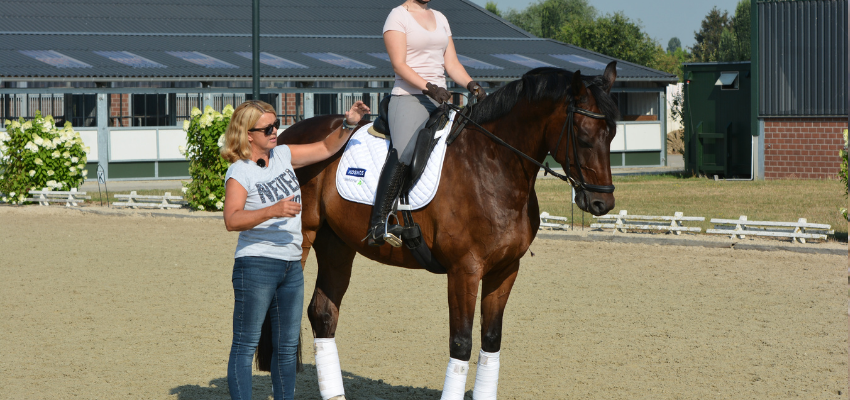
5) You can improve existing momentum with certain exercises
Momentum does not come overnight! Momentum is the result of good basic training. On our website, you will find selected exercises you can use to gain more momentum.
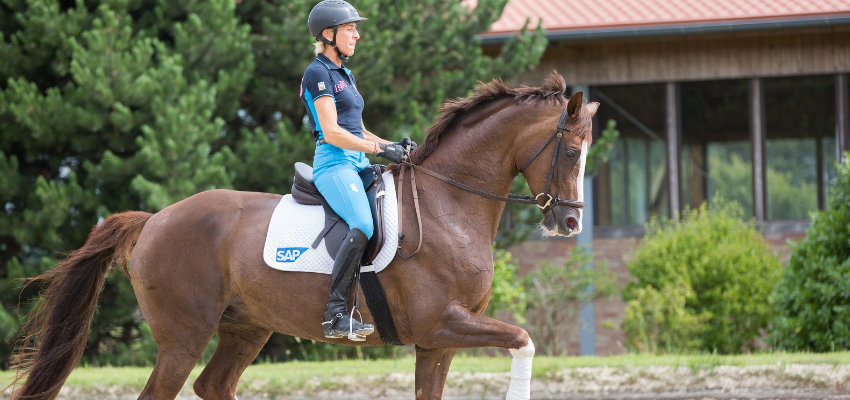
Conclusion: The movement must travel through the whole body
First the basics, then the momentum – that’s the motto. You must first be able to draw the bow in order to let the arrow fly with ease. In the same way, you must first be able to ride your horse in such a way that its movement and the energy from the hindquarters swing through the whole body and the topline is engaged. Then you can release the energy in a strong trot or in a piaffe – without tension and without any effort on your part. Because let’s be honest: nobody really wants to see jabs or kicks.
The real magic of an impressive strong trot or a great pirouette lies in the lightness it radiates. You will miss them without a correctly ridden swing.
